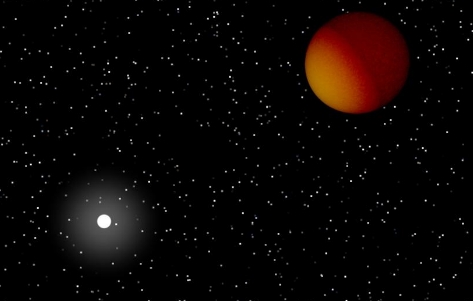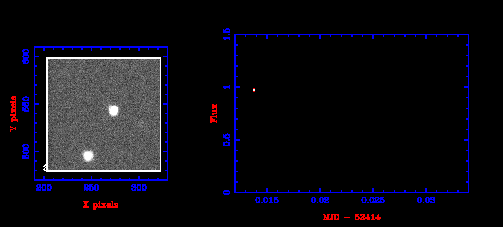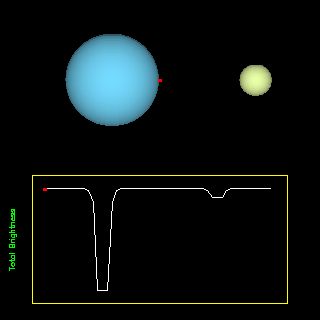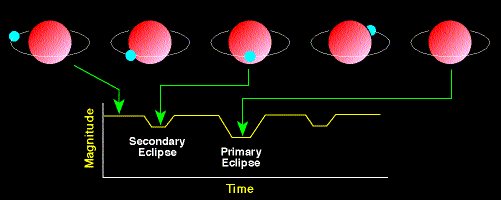| eclipsing binaries |
|
|
| An eclipsing binary is one which shows regular light variations due to one of the stars passing directly in front of its companion, as viewed from the Earth. The change in brightness of the binary can be quite dramatic, as shown in this ULTRACAM movie of the eclipse of a white dwarf by its close M-dwarf companion. |


|
|
|
| Eclipses are only likely to occur if the separation between the two stars is small and if the inclination of the orbital plane to the line of sight is close to 90 degrees, as shown in this animation. |
 ©Richard Pogge (OSU) | |
|
| Unless the two stars are of very different luminosities, there are two eclipses per orbital period, as shown in the image below. The same surface area is hidden at each eclipse, so the primary, or deeper, eclipse occurs when the hotter (i.e. highest surface brightness) star is eclipsed. If the two stars are of very different radii, then there is a period of total eclipse when the light is approximately constant. |
 ©M. Guidry (Tennessee) | |
|
| By studying the shape of the eclipses, in conjunction with a knowledge of their radial velocity curves, it is possible to determine the masses and radii of the stars in the binary. Eclipsing binaries are hence extremely useful systems. Unfortunately, of the approximately 4000 eclipsing binaries recorded in the GCVS, well under 10% have accurate radial velocity determinations. |